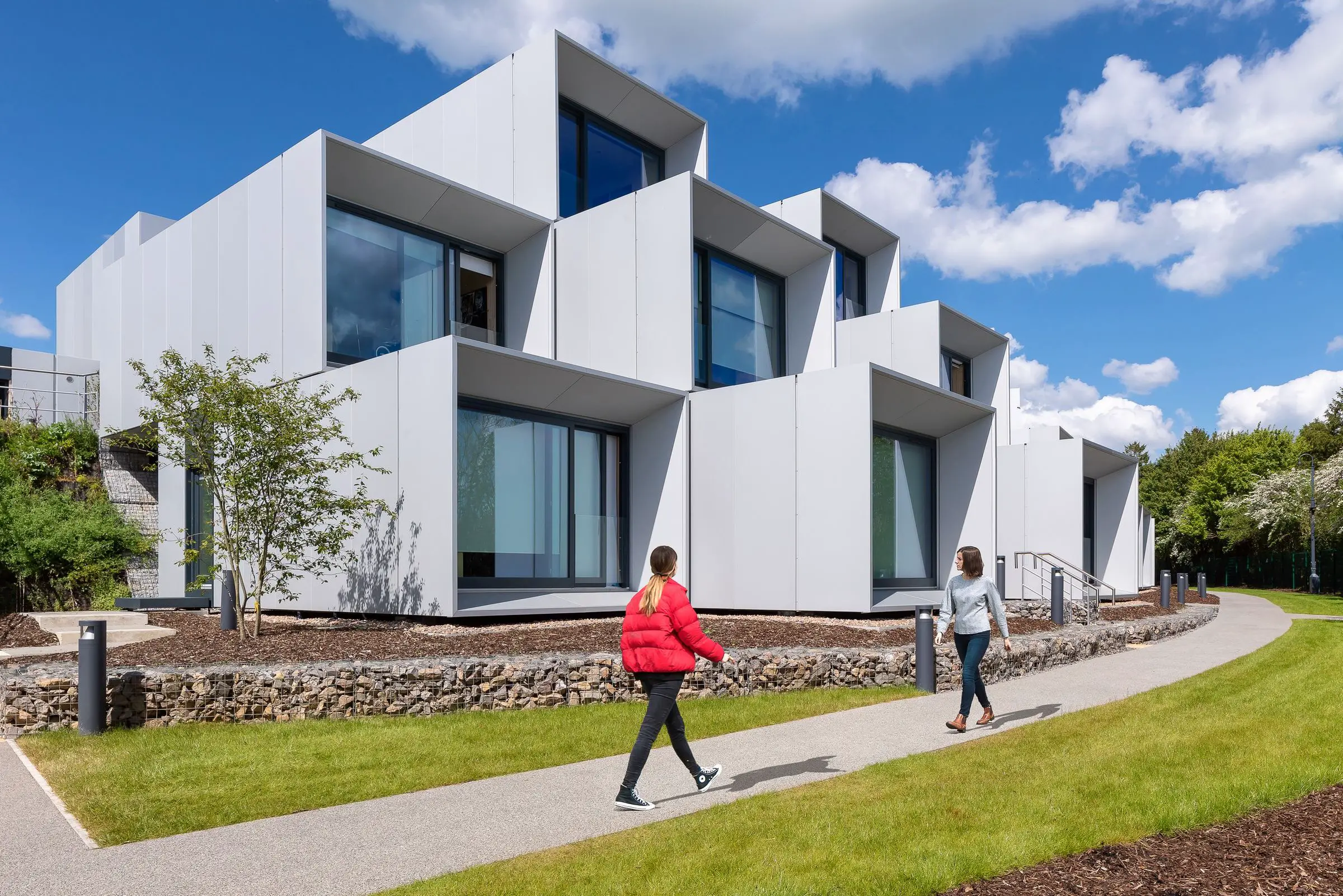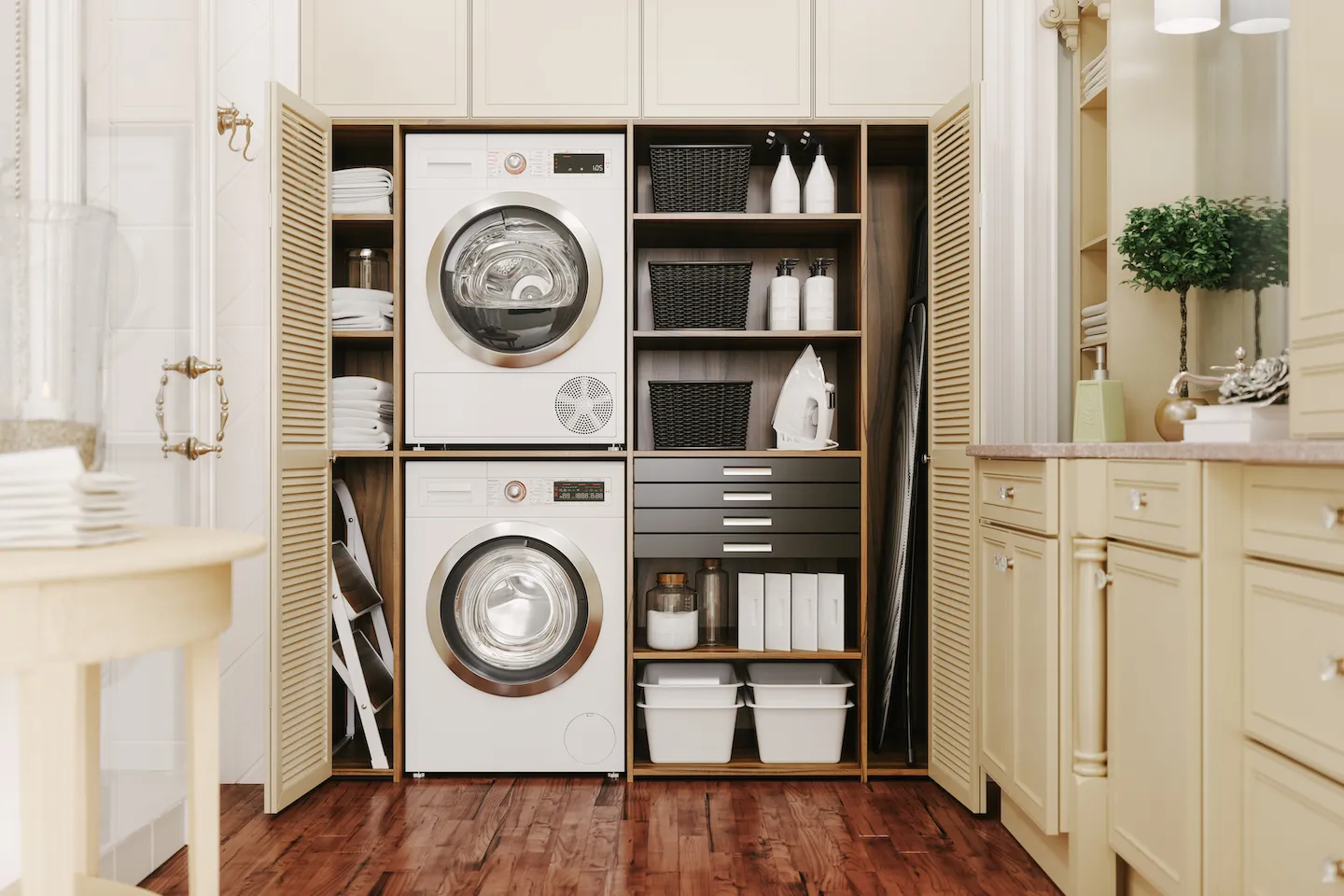As house prices and the cost of living continue to climb faster than salaries, the UK housing market is struggling to provide enough affordable and quality homes to meet the level of buyer demand. Construction of new homes is currently falling far short of the government’s 300,000 per year target.
There is also some research to suggest that people have become more environmentally conscious over the course of the coronavirus pandemic, and eco-features are now top of the list of must-haves for many house hunters.
Demand for low-cost, environmentally-friendly modular homes is growing in the UK, and many see this type of construction as a key element of the solution to the housing crisis. Would you consider buying a modular home? If not, are you missing a trick? Let’s consider the pros and cons of modular housing.
The Pros of Modular Housing
Exceptional Quality
Modular homes are built off-site in factories. This allows for better quality control than is possible when properties are built on-site while open to the elements. All elements of the build, including joints and seals, can be better protected from the weather and unintentional damage from people and traffic on site.
Robust Structure
Prefabricated houses must meet stringent design requirements and be sufficiently strong to withstand transport loads. As a result, they are typically much more robust than traditional homes.
Speedy Construction Time
A modular home can typically be constructed much faster than a brick and mortar property. A small, prefabricated home may be built off-site in as little as two months. It will then take a few days to erect the property on-site. In comparison, it often takes six to 12 months for a new home built by a developer to be ready for moving in. If you’re self-building a house from scratch, you can probably triple the expected completion time! Automated processes and the use of standardised designs help to speed up the build time for modular homes.
Less Noise Transfer
In traditional bricks and mortar homes, sound travels through walls and ceilings. In prefabricated houses, each module is made separately and then connected in a way that minimises noise transfer between different rooms in the house. This means that modular homes have better acoustics and are quieter than traditional properties.
More Environmentally Friendly
Modular homes are typically designed to be more energy-efficient than traditional properties, and many providers will use sustainable materials where possible. Also, because the building is constructed off-site in a factory with just a few days required on-site for installation, the amount of waste produced during the construction phase is significantly reduced, so the environmental impact associated with construction sites is minimal.
Lower Risk of Theft and Damage
UK construction site theft costs £800 million a year. The most targeted items are vehicles, machinery and metals — there are over 7,000 metal-related thefts recorded each month. Not only can theft and vandalism on construction sites affect the developer, but they can also have a knock-on effect on customers who may experience delays in completion and moving-in dates. Modular homes are constructed off-site, so the risk of such problems is significantly reduced. There may only be a few days of installation when the site is vulnerable, as opposed to many months.
More Energy Efficient
Modular homes are typically designed with sustainability and energy efficiency in mind. This means the homeowner will have a lower carbon footprint than if they lived in a traditional home and enjoy more affordable energy bills.
Lower Cost
Producers of modular housing can offer more competitive prices than developers of traditional properties due to the economies of scale that result from regular orders of the same materials. Furthermore, because the designs are standardised, construction tasks are repetitive, allowing for a high degree of automation, utilisation of less-skilled workers and higher productivity — workers who repeat the same task over and over again will quickly become highly skilled and able to deliver exceptional standards of performance.
The Cons of Modular Housing
Limited Availability
Setting up a factory to produce the quantity and quality of homes required for modular housing involves a substantial outlay, and achieving the return on investment takes time. This can make it difficult for some companies to enter the market, limiting the overall availability of modular homes consumers have to choose from.
Stigma and Difficulties Reselling
Although modular housing is nothing new — prefabs were a major part of the government’s post-Second World War strategy to tackle the housing shortage — public perception of these buildings is still mixed. Many people simply can’t believe that something built-in a factory in a few short months can be a sturdy, durable and savvy financial investment. For this reason, while modular homes do typically appreciate in value over time, especially if the location is unique or desirable, they can be more difficult to sell. So, if you’re not buying a property for the long haul and are interested in selling your house quickly in the not-too-distant future, think carefully about the resale potential of modular homes before buying.
A Potentially Shorter Lifespan
Many modular homes are made from a timber frame. Manufacturers of these properties normally offer a 50 to 100-year guarantee, compared to 100 years for a new home built with bricks. However, the durability of a property depends on many factors, and some timber modular homes may withstand the test of time better than others. Concrete modular homes should last as well as bricks and mortar new-builds.
Aesthetic
Some people will not appreciate the modern, “blank canvas” look of many modular homes. And because these properties are built using easy-to-repeat designs, there is often little input from the buyer.
Less Fire Resistance
Modular houses offer less fire resistance than masonry houses, and timber is more combustible than concrete or brick. As a result, fires are more likely, and may cause more damage.
Heat Loss
Timber-framed houses are much lighter than bricks and mortar homes, meaning they do not retain heat as well. When the heating is turned off, a modular home may become cool very quickly. However, it’s worth asking the manufacturer about this as many take measures to ensure the energy efficiency and eco-friendly credentials of their products.
Modular homes can offer an affordable, energy-efficient and relatively fast housing option. However, there are significant differences between the types of property on offer from different manufacturers. Be sure to find out exactly how the property will be constructed, what materials will be used, how long it will take to construct and install, and what input you can have on the design before rushing into a purchase.






